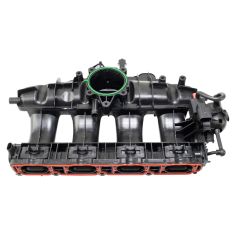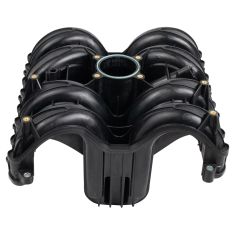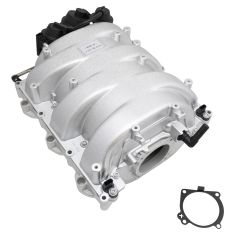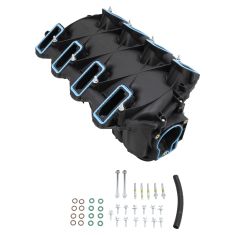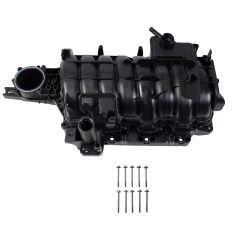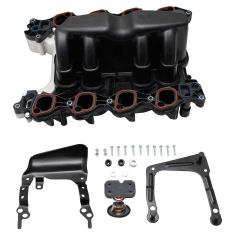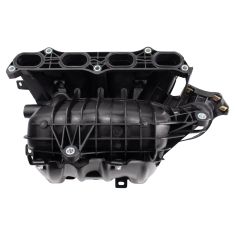Intake Manifold
-
-
- Air Deflectors & Valance Panels
- Battery Trays & Related
- Body Panels
- Bumpers & Related - Front & Rear
- Convertible Tops, Soft Tops, & Parts
- Decal & Stripe Kits
- Emblems & Nameplates
- Engine Compartment Trim
- Frame Parts & Bushings
- Fuel Door Parts
- Fuel Tank Filler Neck
- Grille
- Header Panel
- Hood & Hatch Lift Supports
- Hood Latch & Catch Brackets
- Hood Release Cable
- Jack Pads
- Radiator Supports
- Rust Repair Panels
- Splash Shields & Fender Liners
- Tailgate Cables
- Tailgate Hinges & Related
- Weatherstripping
-
- Car Covers
- Exterior Lighting
- Exterior Parts & Accessories
- Exterior Safety & Security
- Exterior Storage
- Fender Flares
- License Plate Brackets & Frames
- Mud Flaps & Splash Guards
- Nerf Bars, Side Steps, Running Boards
- Radio Antenna
- Rain Deflectors
- Roll Bars, Light Bars, & Related
- Roof Rack
- Skid Plates
- Spare Tire Carriers & Related
- Spare Tire Covers
- Tire Care
- Tonneau Covers
- Tow Hooks & D-Shackles
- Towing Accessories
- Trailer Hitch & Components
-
- Accelerator Pedal Pad
- Auto Carpet
- Brake Pedal Pad
- Clutch Pedal Pad
- Console Parts
- Dash Pad Cover
- Dash Vents
- Floor Mats & Liners
- Horns & Horn Parts
- Interior Parts & Accessories
- Mirror - Interior Rear View
- Seat Cover and Sets
- Seat Heater Kits
- Seat Parts and Accessories
- Sun Visors & Related
- Trunk & Cargo Parts
-
- Accelerator Pedals & Sensors
- Alarms, Control Modules, & Remote Start
- Cruise Control Switch & Lever
- Electrical Parts
- Hazard Switch
- Ignition Key Lock Cylinder
- Ignition Switch
- Keyless Entry Remote & Related
- Neutral Safety Switch
- Parking Assist Cameras & Monitors
- Power Mirror Switch
- Power Seat Switches
- Power Window Switch
- Radio, Navigation, Entertainment
- Reverse Light Switch
- Trunk Release & Lock Solenoids
- Turn Signal Switches and Levers
- Windshield Wiper Switch
-
- Idler Arm
- Pitman Arm
- Power Steering Hoses
- Power Steering Oil Cooler
- Power Steering Pressure Sensor
- Power Steering Pump
- Power Steering Pump Cooling Fan
- Power Steering Pump Pulley
- Power Steering Pump Reservoir
- Steering Dampers
- Steering Knuckles and Spindles
- Steering Rack and Gear Boxes
- Steering Shafts & Couplers
- Steering Wheels & Column Parts
- Tie Rods & Adjusting Sleeves
-
-
-
-
-
-
80
8
10
10
-
Notify When Available$112.95Save 15%List $132.95 Save $20.00Brand: TRQ - IMA93300$112.95Save 15%List $132.95 Save $20.00
-
Notify When Available$159.95Save 24%List $209.95 Save $50.00Brand: TRQ - IMA08044$159.95Save 24%List $209.95 Save $50.00
-
Notify When Available$279.95Save 28%List $386.95 Save $107.00Brand: TRQ - IMA08083$279.95Save 28%List $386.95 Save $107.00
-
Notify When Available$159.95Save 21%List $201.95 Save $42.00Brand: TRQ - IMA07935$159.95Save 21%List $201.95 Save $42.00
-
Notify When Available$159.95Save 18%List $195.95 Save $36.00Brand: TRQ - IMA07937$159.95Save 18%List $195.95 Save $36.00
-
Notify When Available$339.95Save 24%List $447.95 Save $108.00Brand: TRQ - IMA07944$339.95Save 24%List $447.95 Save $108.00
-
Notify When Available$174.95Save 16%List $208.95 Save $34.00Brand: TRQ - IMA07939$174.95Save 16%List $208.95 Save $34.00
-
Notify When Available$79.95Save 24%List $104.95 Save $25.00Brand: TRQ - IMA07940$79.95Save 24%List $104.95 Save $25.00
-
Notify When Available$174.95Save 15%List $206.95 Save $32.00Brand: TRQ - IMA07938$174.95Save 15%List $206.95 Save $32.00
-
Notify When Available$102.95Save 24%List $135.95 Save $33.00Brand: TRQ - IMA07928$102.95Save 24%List $135.95 Save $33.00
loading...
Choose the Make of Your Vehicle
